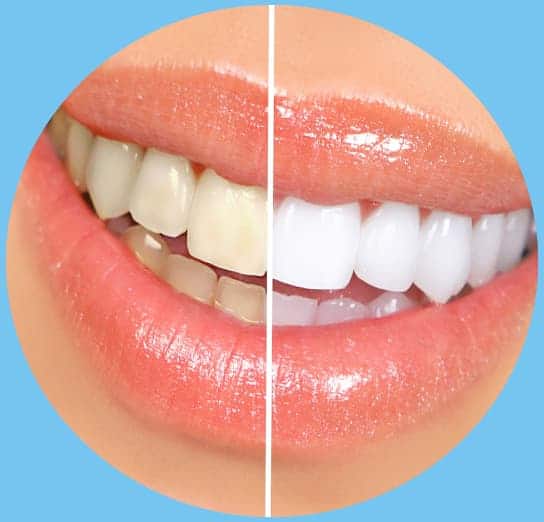A healthy smile should be for everyone. Yellowish, pale white or off-white tone of teeth shatters the confidence and wipe off the charm of your personality. White and sparkling teeth shows your oral health, care sense and double up the confidence.
Reasons for Discoloration
There are several reasons of dullness of teeth shine and yellowish tone. Too much use of artificial juices, candies or food which contain food coloring can mark stains over teeth. It is very common among kids. Among adults, consumption of coffee, tea, wine, or flavored alcohol is prevalent. All these drinks contain concentrated color pigments called chromogens. Their pigments directly affect the teeth color from inside as well as outside.
Underneath the hard, white outer shell of your teeth which is called enamel lies a softer and darker area called dentin. Enamel layer gets thinner and thinner by the time due to brushing, inappropriate oral care or wrong choice of food. Dentin the yellowish layer shows through. So it can be said that aging may cause enamel damage which can result in yellow color of teeth.
Tooth darkening or yellowing can be an unexpected result of certain antihistamines, antipsychotics, and high blood pressure medications. Another reason is young children are given to antibiotics like tetracycline and doxycycline when their teeth are forming which can cause discoloration of their adult teeth later in life. Chemotherapy or head and neck radiation therapy can also darken teeth. Medicine with abundant amount of active iron can also play a part in damaging teeth color.
Tobacco, weed, betelnut, supari, tanbool, gutka are some products which can severely damage oral health including discoloration of teeth.
Whitening Treatment
There are several gels, toothpaste and whitening strips available in the market which can be used easily to change the color of teeth from yellow to white. But these products are not practical for teeth which are yellow because of damaged enamel layer or due to stains from inside layers of teeth.
All these products are easy to use, but there is no guarantee of white color for a longer time. Another issue includes that the hydrogen peroxide content in all these products can act harshly over the gums, tongue and cheek flesh inside the mouth.
Treatment by Dentist
There are two kinds of whitening procedures performed by dentists or oral professional. These types are mentioned below.
Vital Whitening Treatment
Vital whitening is for teeth which have live nerves. This treatment is not effective for teeth with a root canal or dead gum. In this treatment, a gel with a rich amount of hydrogen peroxide is applied over the teeth. The quality of cleaning agent or hydrogen peroxide is formulated with suitable other contents which shield the chemical from acting harshly on gums, and mouth. The cleaning agent lightens the stains and cleans the pigmentation in 1 to 4 sessions.
Laser light at the tip of dentist`s tool accelerate the cleaning agents which may get activated because or laser or heat from laser light. This treatment is highly effective, and teeth stay white for a longer time.
Non-Vital Whitening Treatment
For teeth with root canal history or have no live root can be treated with non-vital whitening treatment. Dentist penetrates the whitening agent inside the teeth and conceals the teeth by filling. The whitening agent is placed in inside layers because the discoloration is not from outside but from inside.



